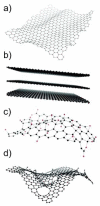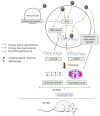Genotoxicity of Graphene-Based Materials
- PMID: 35683650
- PMCID: PMC9182450
- DOI: 10.3390/nano12111795
Genotoxicity of Graphene-Based Materials
Abstract
Graphene-based materials (GBMs) are a broad family of novel carbon-based nanomaterials with many nanotechnology applications. The increasing market of GBMs raises concerns on their possible impact on human health. Here, we review the existing literature on the genotoxic potential of GBMs over the last ten years. A total of 50 articles including in vitro, in vivo, in silico, and human biomonitoring studies were selected. Graphene oxides were the most analyzed materials, followed by reduced graphene oxides. Most of the evaluations were performed in vitro using the comet assay (detecting DNA damage). The micronucleus assay (detecting chromosome damage) was the most used validated assay, whereas only two publications reported results on mammalian gene mutations. The same material was rarely assessed with more than one assay. Despite inhalation being the main exposure route in occupational settings, only one in vivo study used intratracheal instillation, and another one reported human biomonitoring data. Based on the studies, some GBMs have the potential to induce genetic damage, although the type of damage depends on the material. The broad variability of GBMs, cellular systems and methods used in the studies precludes the identification of physico-chemical properties that could drive the genotoxicity response to GBMs.
Keywords: genotoxicity; graphene-based materials; mutagenicity.
Conflict of interest statement
The authors declare no conflict of interest.
Figures





References
Publication types
Grants and funding
LinkOut - more resources
Full Text Sources

